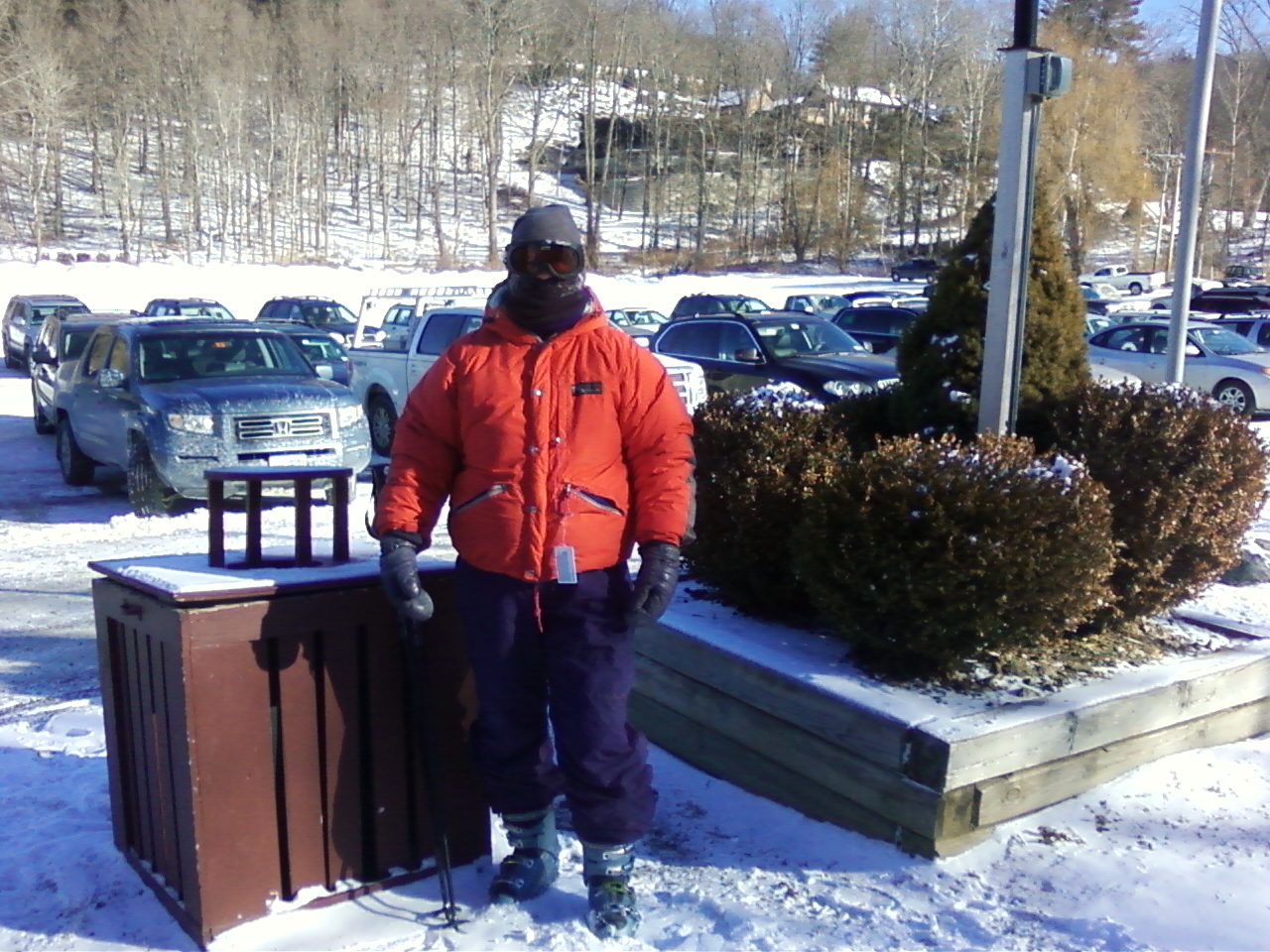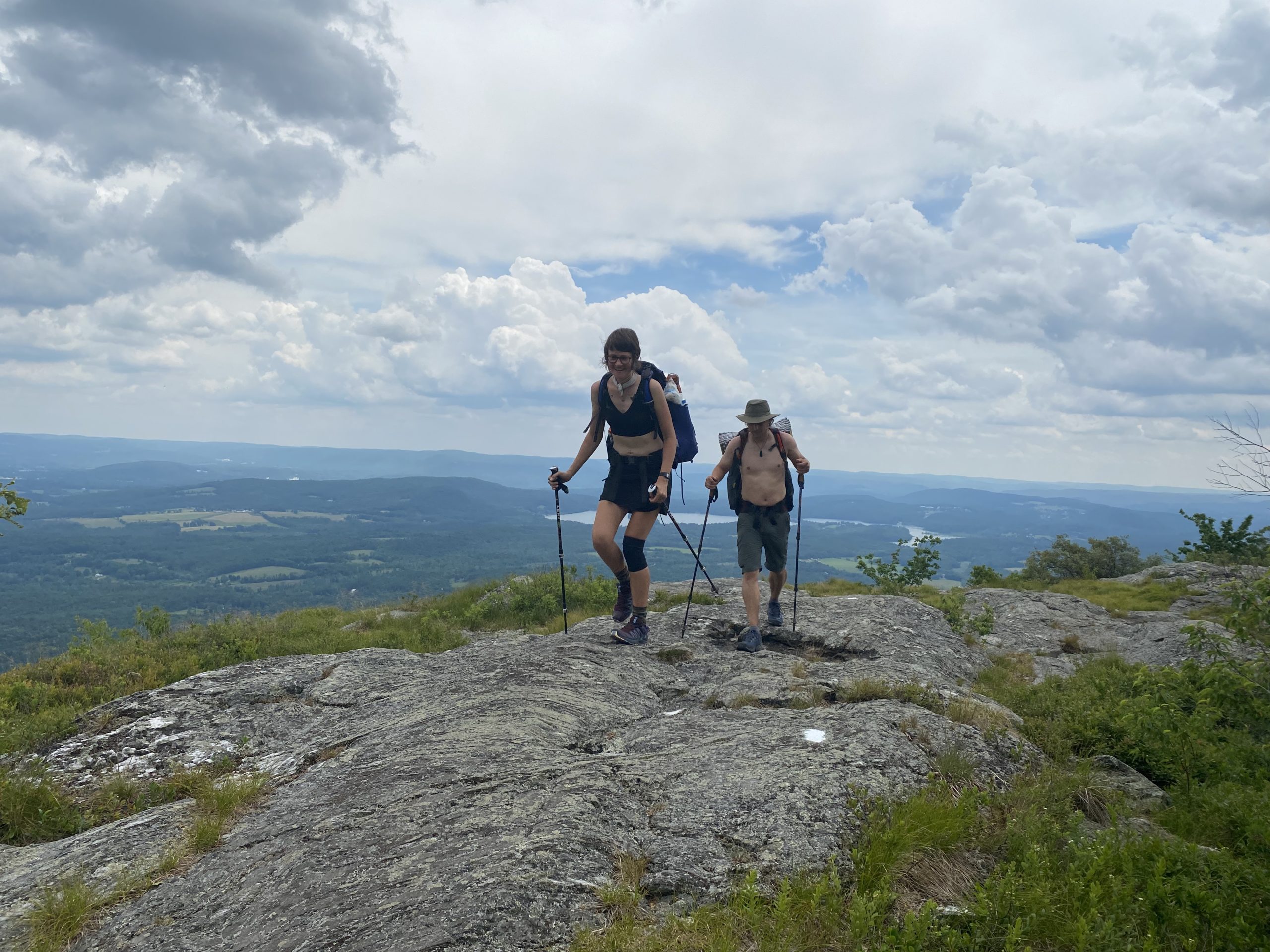Continuing on with the lightweight hiking theme… Summer is a great time to experiment with different gear. And one of the best places to trim weight is with your shelter. A simple tarp may may be all that you need, and a tarp that protects two people may not weigh much more than a pound. Considering that many two-person tents weigh in at four, five, or six pounds (ouch!) that’s a lot of weight savings.
Even in hot and dry climates, you almost always want to have some sort of shelter in case it rains at night. Some of us have learned this lesson through cold and damp experience. In my case, the lesson took the form of a snowfall that woke me up when I was backpacking without carrying any sort of tent or tarp. It was Memorial Day in New Mexico. Choices: To get up and start walking at 3:30 a.m. or to lay there in the falling snow.
But while some kind of weather protection is necessary, in a reliably mild or arid climate, you can afford to go light. For shelter, that means taking a tarp, a simple square or rectangular sheet of coated waterproof nylon.
Best Uses for A Camping Tarp
Tarps are good choices for anyone who is concerned about weight, especially backpackers. Bikers or paddlers can more easily handle a few extra pounds, and sometimes opt for the relative luxury of a tent. But tarps work better in some conditions than others.
- Use a tarp when you expect mostly warm, dry weather. You probably won’t need it, and if you do, it will protect you from the rain while still allowing good air flow, which is much more comfortable in warm humid conditions.
- Don’t use a tarp when you expect lots of rain and snow. It doesn’t offer as much rain protection as a tent, and snow can easily drift inside.
- Don’t use a tarp when you expect to camp in exposed areas of high winds, or when you expect to have to camp on surfaces where it is hard to drive in a secure stake.
- Do use a tarp when you expect to be mostly staying in shelters, and only need an emergency shelters for nights when shelters are full in bad weather.
- Don’t use a tarp in mosquito season. Black flies are not so much a problem, as they aren’t active at night, but tarps offer scant protection against mosquitoes unless you also carry (and affix) a net – in which case you may as well carry a lightweight tent.
Tips for Choosing and Pitching Tarps
- Two people can squeeze into a 64-square-foot tarp, but it’s a tight fit. The 72 square-foot size is more comfortable for two.
- You need enough parachute cord to tie guylines for all the grommets, and a stake for each grommet.
- You need two poles to hold up the tarp. (Basically, you are making a triangular tent, like a typical old-fashioned A-frame tent). You can use walking sticks as tent poles.
- You need a long line of cord to pull out and stake the tarp where the walking sticks hold it up.
- You can pitch the tent asymmetrically, if necessary. The tarp should be side to the wind, so that the wind doesn’t whip through it. You can bring down the fabric lower on the side that faces the wind to create a nylon “wall,” and leave the lee side more open.
- Be sure your guylines are pulled tight and your stakes are securely in the ground.
- Using a ground cloth keeps your gear clean and dry.
- Consider drainage issues, and try to pitch in a place where water won’t flow or settle.
Tarps are not good choices for all backpacking situations, but they work well in mild climates where you don’t expect to need a lot of weather protection. And they might just help save your trip when unexpected weather rolls in.

